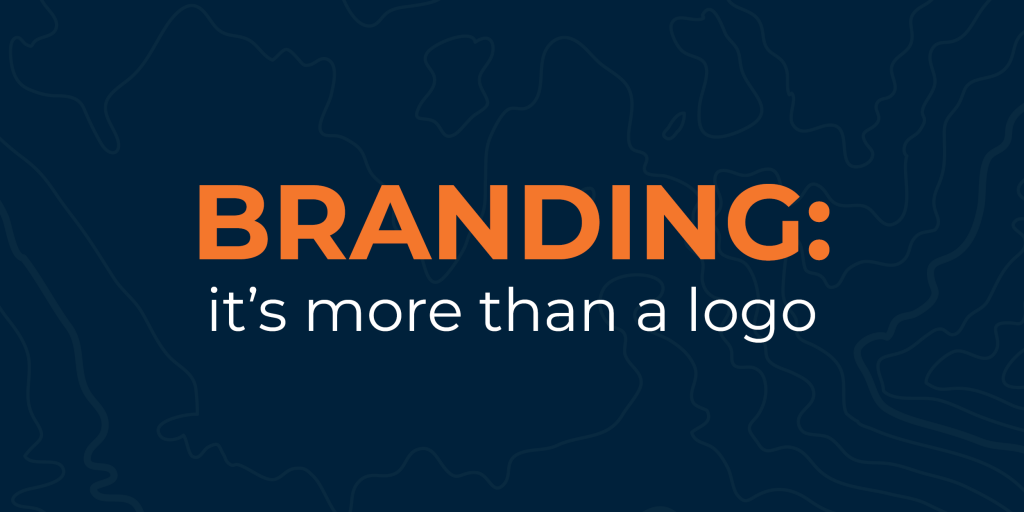When companies think about their brand, it’s more than just a logo. But many companies fail to think of their brand as more than a logo. These companies spend hours building a business strategy and figuring out ways to make a return on the large investment of starting or maintaining a company. They find the right people and set up camp in all the right places.
They know a logo is important, but branding is more than just a logo.
A brand is vital to the success (or failure) of a company. A brand implemented poorly or not implemented at all can leave your customers confused about the products or services you offer.
As a business, your brand deserves just as much time and planning as the other aspects of your company.
WHAT I MEAN BY “BRANDING”
Branding includes a logo, yes, but the logo is a single element of the entirety of your brand. Branding is a package deal: it’s an entire set of elements that make up the look and feel of your business. And this is not to be taken lightly!
The elements of a brand can be divided into two sections: one being the visuals, and the other being the language.
THE VISUALS
The visual elements in a brand communicate the tone of your brand purely aesthetically. They include: primary and secondary color palettes; typography (a pre-defined set of fonts that your brand uses for everything); a defined graphic style used for supporting graphic elements as well as iconography; photography style; company template design (including letterhead and business cards); web guidelines; as well as numerous other visual applications.
It’s so important for your visuals to be unified. If your visuals are all over the place, and poorly designed, then your customers will slowly lose trust in you as a company. People inherently avoid ugly things. You’ll look messy, like an amateur.
THE LANGUAGE
The language-based elements of a brand are a little more abstract than the visual ones. This section is all about the tone of your brand. It includes the way your social media posts are worded, and how that differs from your advertisements or emails. In this section, you sit down and outline what kinds of things your company says, and how it says them. This includes your tagline as well as your mission statement.
Language is important because it proves to your customers that you really do have their best interest in mind, and it shows them exactly how they can relate to you as a company.
When the visuals and the language come together and support one another, they beautifully give body to your company and its goals.
WHY IT MATTERS
I mentioned in the beginning that a lot of business-owners are largely concerned with making money. Well, in order to make money, you need a dedicated customer base. People are more willing to invest in your product or service if they have built a deep trust in who you are and what you say to them. If you know exactly how you help your specific customers, and what pain points you solve for them, they are more likely to build trust in you over your competitors.
Know what you’re about and your customers will, too.
Think about a few companies with the most established branding, ones you recognize without even needing to think about it: Coca Cola, Nike, Volkswagen, Apple…all of these companies have solid branding that resonates across the board, in all aspects of their companies. They are also extremely good at storytelling. They know how to link their brand with stories that connect with real people. In fact, a lot of their advertisements aren’t even directly about their product. They present a visual or story that resonates with their viewers, and evokes a certain reaction. They then associate that with their brand to offer viewers an experience instead of a product.
Before I set out to do any sort of branding work with my customers, I first send them a comprehensive branding questionnaire to nail down their goals and mission. It’s so important to have a road map before you bring a designer into the mix. We do our best to deliver amazing design, but it’s important for you, as the customer, to sit down and hash out the big ideas of your brand. When you do this, it allows you and your designer to be on the same page regarding your company’s goals and mission. This makes for clear communication to your customers, which is what design is all about!
If you’re interested in filling out a branding questionnaire to either build a new brand or refine an existing one, click here!


Recent Comments